Former Yamaichi Hayashi-gumi Silk Manufacturing Office
This is Okaya City, Nagano Prefecture.
Okaya City (*) flourished as a center of the silk industry from the Meiji era to the early Showa era, and buildings related to the industry still remain. One of them is the former Yamaichi Hayashigumi Silk Manufacturing Office.
(* Okaya City became a city in 1936; before that, it was Hirano Village.)
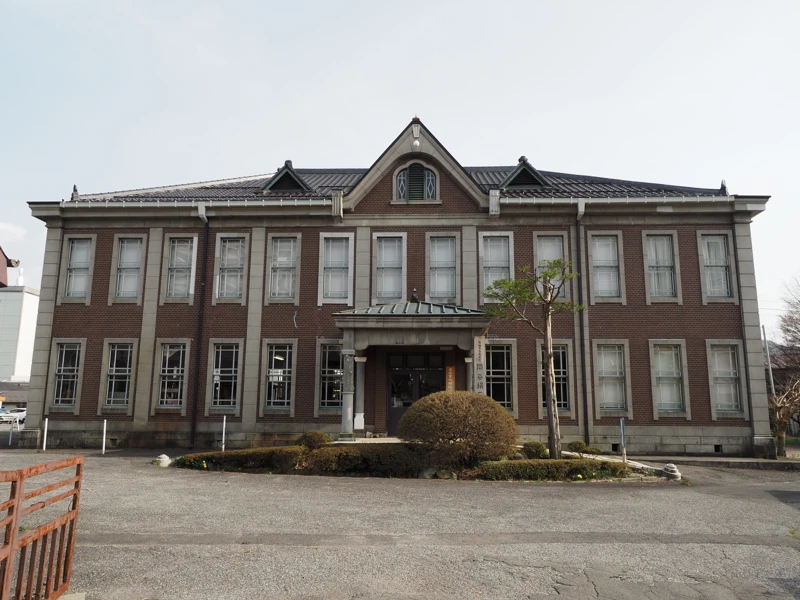
Yamaichi Hayashi-gumi was founded by Sehei Hayashi in 1879, and joined a silk manufacturing company called Kaimei-sha, founded by Kanetaro Katakura and others, in 1883. In 1903, the company was spun off from Kaimei-sha and renamed Hayashi-gumi, an unlimited partnership. (“Yamaichi” is a trade name.)
Yamaichi Hayashi-gumi became one of the five largest silk mills in Okaya, and by the early Showa period (late 1920s), it had factories in Saitama, Shizuoka, and Aichi prefectures as well as in Okaya, making it the sixth largest mill in Japan.
This building was built in 1921 as the office of Yamaichi Hayashi-gumi.
The building is a two-story wooden structure with Western-style tiled exterior walls and a Japanese tile roof.

The building currently houses the Okaya Silk Workshop, where visitors can try their hand at weaving Okaya silk (for a fee).
There is also a sales corner and we can take a tour inside, but the museum is only open on Tuesdays, Saturdays, and Sundays from 9:30 to 16:00.
I visited on a Saturday, five minutes before closing time, and missed the chance to see the inside.
As inside, most of the first floor is occupied by an office. And there are also two Japanese-style rooms. The second floor has an auditorium, two Japanese-style rooms, and two Western-style rooms.
Yamaichi Hayashi-gumi became the focus of public attention during a labor dispute in 1927 (August 28-September 18).
About 1,200 people participated in the dispute, but the company closed the factory and dormitories, ending in defeat for the workers.
After the dispute, Yamaichi Hayashi-gumi resumed operations, but the Great Depression of 1929 forced several silk mills in the prefecture to close.
Yamaichi Rin-gumi became a joint stock company in 1929, but went bankrupt the following year.
The circumstances after the bankruptcy are not clear, but the company became 'Mihato Silk’ in 1948, then changed its name to 'Shin-ei Kogyo’ in 1961 and shifted to the precision industry. (The company closed in 1972.)
Let’s take a look at the transition of the office and factory site on the aerial photographs.
This rough photo is an aerial photograph taken in 1947. The office building is indicated by the arrow.
The factory buildings are shown on the south side.
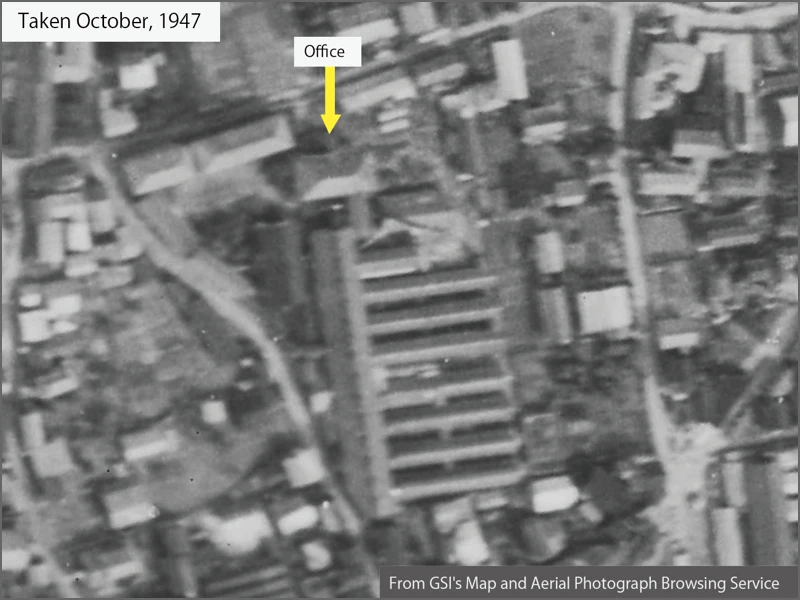
The next photo was taken in 1975.
The number of factory buildings has decreased. Demolition may have started soon after the closing of the business.
Although not be posted here, the number of buildings in the 1980 aerial photograph is unchanged from that of 1975.
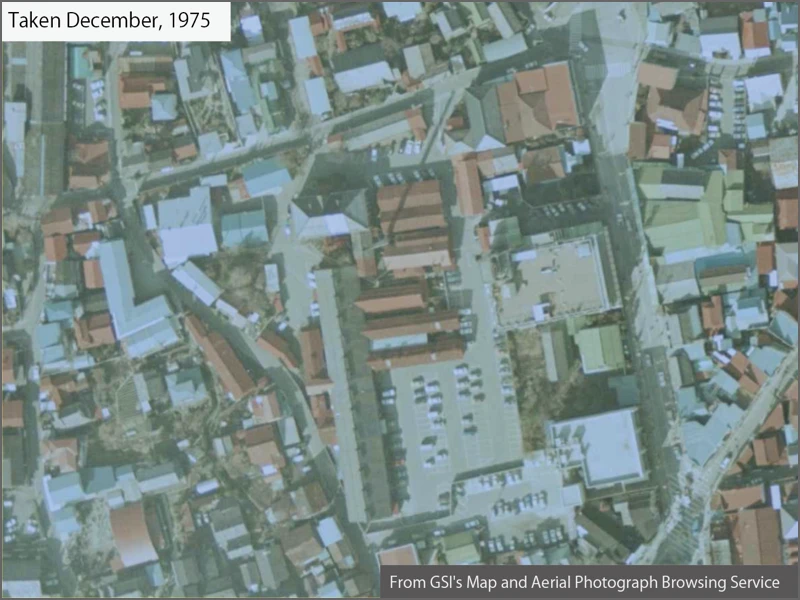
By 2000, only the office building remain.
Most of the buildings have been demolished during the past 20 years.
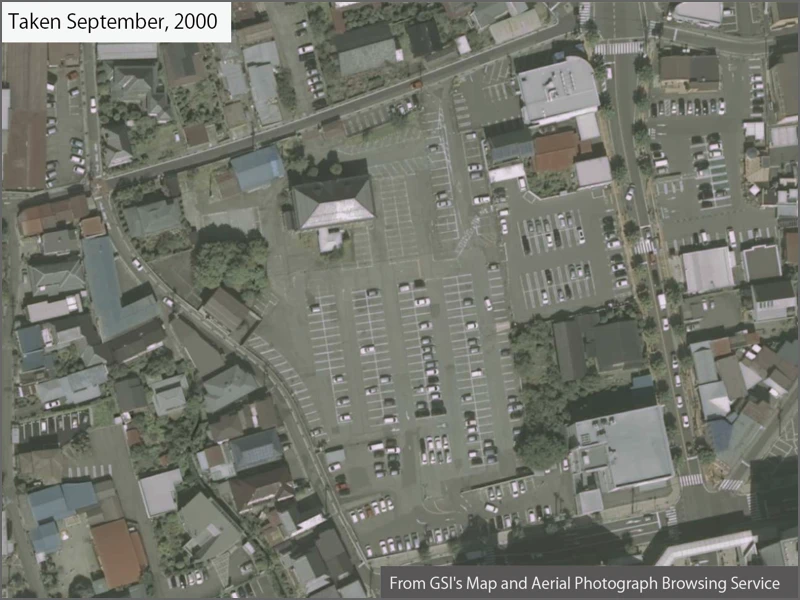
In fact, besides the office, there is one other building from those days still standing. It is the guard station by the gate on the north side of the office. This seems to have been built at the same time as the office.
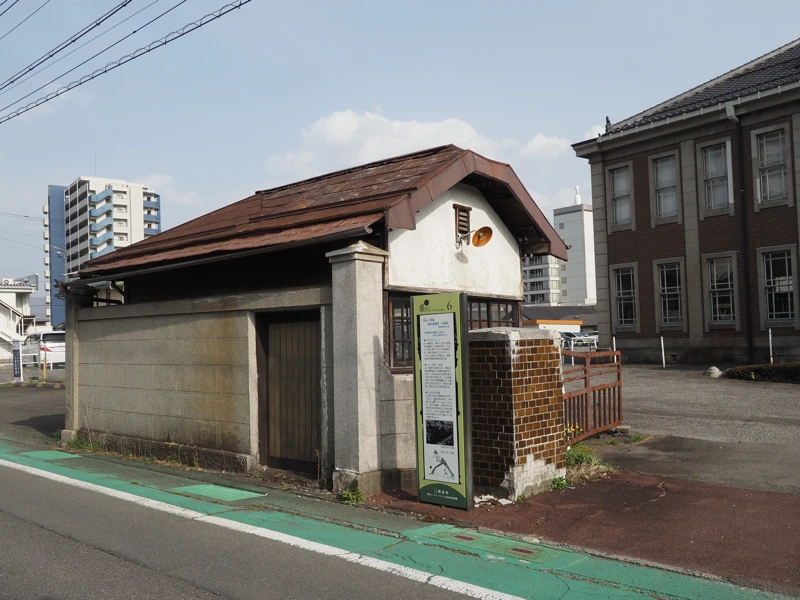
The office and guard station were owned by Shin-ei Kogyo after the closing of the business, but were transferred to Okaya City in 2003.
In 2005, both were registered as national tangible cultural properties.
And in 2007, 15 heritage sites that tell the story of the period when the silk industry was flourishing were recognized as Heritage of Industrial Modernization. The office and guardhouse are included in the list.

West side of the office.
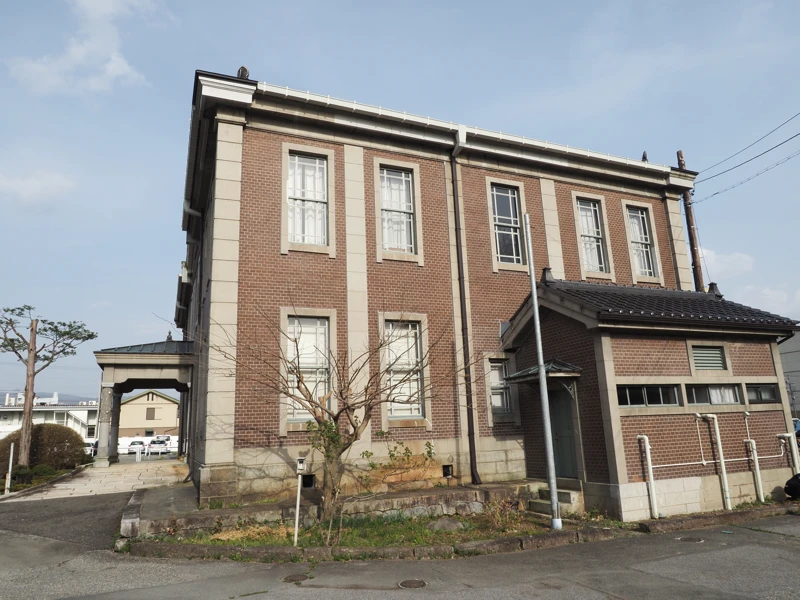
This is the entrance to the office. There is a plate of Registered Tangible Cultural Property under the nameplate and a plate of Industrial Heritage of Modernization above.
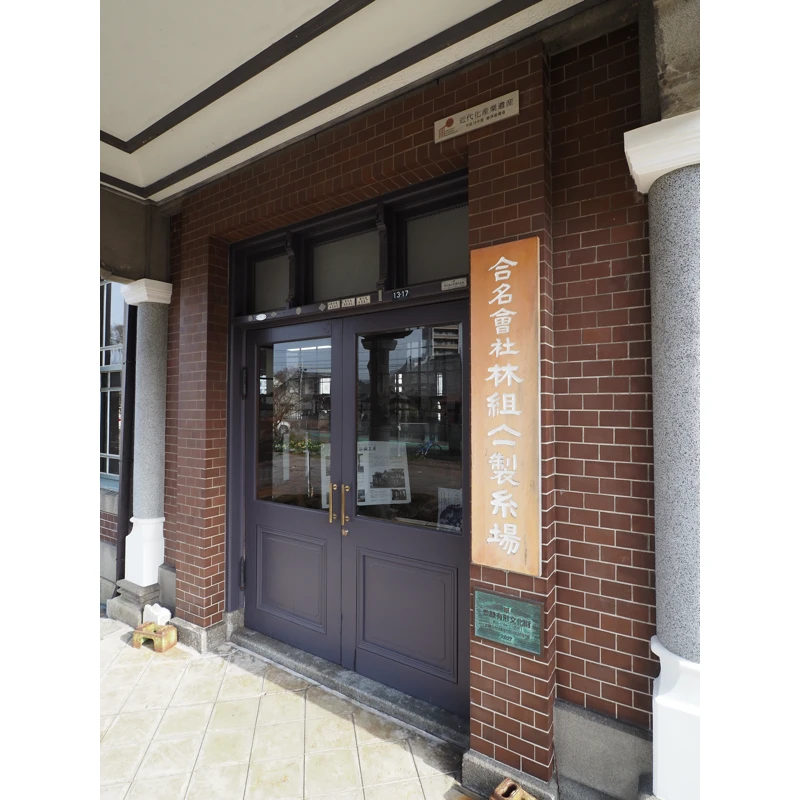
I could not visit inside this time, so I will come back next time.
After this, I will visit another industrial heritage site nearby.
[Reference] (all written in Japanese)
“The Situation of the Silk Industry in Japan: History of Successful People” (ed. by Sodo Iwasaki / Hakugakukan / 1906)
“The Former Yamaichi Hayasi-gumi Silk Manufacturing Office, 100th Anniversary of Construction” (Okaya City Board of Education / 2021)
“Modern Industrial Heritage” (“Tabi-tabi Okaya” Okaya City Tourism Association website)
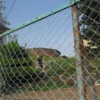
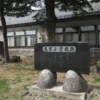


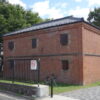
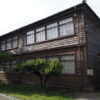
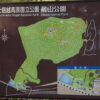
Discussion
New Comments
No comments yet. Be the first one!